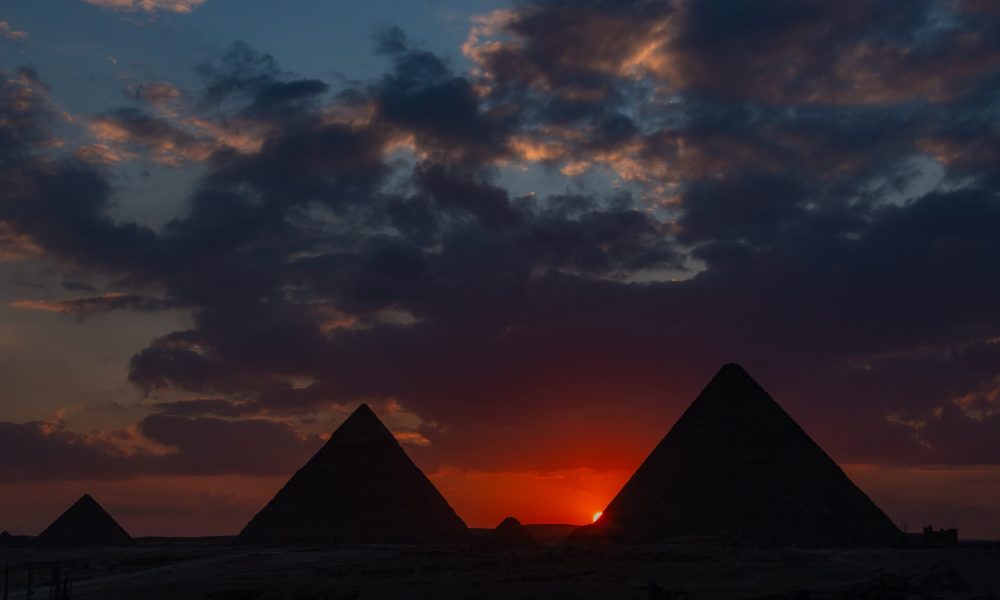

"Standing as timeless sentinels against the backdrop of Egypt's expansive desert, the ancient pyramids have captivated the imaginations of travelers and scholars alike for centuries. As the sun sets over the Giza Plateau, casting shadows that dance upon colossal stone structures, one can't help but marvel at the enduring legacy of human ingenuity. 'Built by kings, for kings,' they say, yet these iconic structures transcend their role as mere tombs. Join me on a journey back in time as we unravel the mysteries and explore the profound significance of the Great Pyramid of Giza, the Pyramid of Khafre, and the Pyramid of Menkaure. As we navigate through the sands of history, let's unveil the tales etched in stone and decipher the architectural language of an ancient civilization that dared to reach for the stars."
"In the pages that follow, we will embark on a virtual expedition through the heart of ancient Egypt, unraveling the enigmatic stories behind three of the world's most renowned structures—the Great Pyramid of Giza, the Pyramid of Khafre, and the Pyramid of Menkaure. This blog is not a mere historical account but a passionate exploration of the cultural tapestry woven by the hands of the pharaohs.
We'll delve into the historical context of ancient Egypt, understanding why these colossal structures were built and what they represent in the grand narrative of human history. From the colossal stones that form the Great Pyramid to the Sphinx's silent guardianship, each chapter will unfold the architectural marvels and cultural nuances of these ageless monuments.
Together, we'll explore the purpose and symbolism behind these monuments, decoding the messages left behind by a civilization that revered life, death, and the cosmic order. As we tread through the corridors of time, we'll witness the architectural achievements that continue to leave modern architects in awe.
Furthermore, we'll examine the impact of these pyramids on tourism, considering how these ancient structures draw millions of visitors each year and what measures are taken to preserve their glory. Join me on this odyssey through sand and stone, where history comes alive, and the legacy of the ancient Egyptians beckons us to gaze upon the wonders of the past with newfound appreciation."
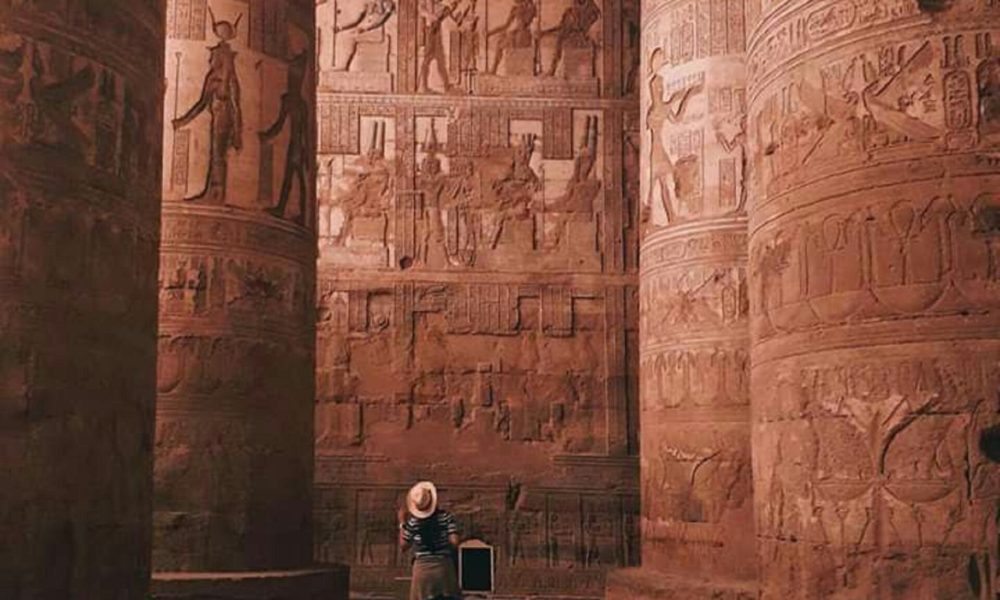

Historical Context: The Pyramid-Building Era in Ancient Egypt
"As we immerse ourselves in the sands of time, let's navigate the historical currents that defined ancient Egypt during the extraordinary pyramid-building era. This pivotal epoch, known as the Old Kingdom, unfolded approximately from 2686 BCE to 2181 BCE, marking a golden age of prosperity and monumental construction.
The Old Kingdom: A Flourishing Civilization:
During the Old Kingdom, ancient Egypt emerged as a formidable and centralized state along the fertile banks of the Nile River. This period witnessed a stable and organized government under the rule of pharaohs, considered living gods on Earth. The wealth generated from agriculture and trade fueled the grand projects that would shape the landscape for millennia to come.
The Rise of Pharaohs and Divine Kingship:
The pharaohs, at the pinnacle of the social and political hierarchy, epitomized divine kingship. Their authority wasn't merely secular; it extended to the spiritual realm, intertwining the earthly and the divine. It was in this context that the monumental pyramids were conceived—not just as architectural marvels but as sacred edifices bridging the gap between mortal life and the eternal afterlife.
Pyramids as Cosmic Observatories:
The alignment of pyramids with celestial bodies, notably the cardinal points, wasn't a mere architectural detail but a manifestation of the Egyptians' profound connection with the cosmos. These structures weren't just terrestrial; they were cosmic observatories, reflecting the Egyptians' belief in an eternal cosmic order and the cyclical nature of existence.
The Workforce and Architectural Prowess:
At the heart of this grand endeavor was an awe-inspiring workforce, a testament to the organizational capabilities of ancient Egyptian society. Skilled artisans, laborers, and architects collaborated in harmony to bring the pharaohs' visions to life. The construction of pyramids demanded not only physical strength but also a deep understanding of geometry, astronomy, and engineering—a legacy that continues to astound modern architects.
Religious Beliefs and Rituals:
Religion played a central role in the daily lives of ancient Egyptians. The pyramid-building era saw the emergence of complex religious beliefs, where the afterlife held a significant place. The Pyramid Texts, inscribed on the inner walls of these structures, were sacred spells and rituals intended to guide the pharaohs on their celestial journey after death.
Cultural Flourish and Architectural Legacy:
As the pyramids rose against the backdrop of the Nile Valley, a cultural renaissance blossomed. Temples, statues, and intricate artworks adorned the landscape, reflecting a society deeply rooted in artistic expression and spiritual reverence. The architectural legacy of this era, epitomized by the Giza pyramids, stands as an eternal testament to the heights ancient Egypt reached in both cultural and engineering achievements.
In our next exploration, we'll unveil the intricacies of the Great Pyramid of Giza—the crown jewel of this remarkable era—unraveling the mysteries encoded in its colossal stones and echoing through the corridors of time."
Significance in Ancient Egyptian Culture: Tombs and Religious Beliefs
"The pyramids of ancient Egypt stand as enduring symbols of the civilization's spiritual and cultural wealth. These colossal structures, primarily built during the Old Kingdom, were not just architectural marvels but intricate vessels designed to transcend the boundaries between life and death.
Tombs for Pharaohs:
In the heart of their significance lies the role of pyramids as eternal resting places for pharaohs—Egyptian rulers considered divine beings with a spiritual duty to maintain cosmic harmony. The grandeur and scale of these tombs served not only as tributes to their earthly power but also as gateways to the afterlife.
The Great Pyramid of Giza, housing the remains of Pharaoh Khufu, stands as a testament to the ambitious vision of immortality. The meticulous construction, aligning with celestial bodies, was an attempt to secure the pharaoh's journey to the stars and ensure a favorable transition into the afterlife.
Religious Beliefs and the Afterlife:
Beyond being grand tombs, pyramids encapsulated the profound religious beliefs of the ancient Egyptians. The intricate inscriptions on pyramid walls depict a world where life after death was a continuation of earthly existence, with the deceased joining the realm of gods and cosmic forces.
The Pyramid Texts, engraved within the pyramids, were sacred incantations and rituals aimed at guiding the pharaohs through the perilous journey of the afterlife. These texts, often inscribed on the inner walls, outlined spells, prayers, and instructions, emphasizing the importance of a well-preserved body and the proper conduct of burial rites.
Cosmic Symbolism:
Pyramids were not merely terrestrial structures; they were cosmic symbols aligning with the celestial order. The shape of the pyramid represented the sun's rays descending to earth, connecting the earthly and divine realms. The meticulous alignment of pyramids with cardinal points mirrored the Egyptians' keen awareness of celestial cycles and their belief in an eternal cosmic order.
As we stand before these towering structures, we witness the harmonious integration of religion, art, and architecture—a testament to the ancient Egyptians' unwavering belief in the continuity of life beyond the mortal realm. Join me in the next chapter as we explore the architectural wonders and symbolism embedded within the Great Pyramid of Giza, the Pyramid of Khafre, and the Pyramid of Menkaure."
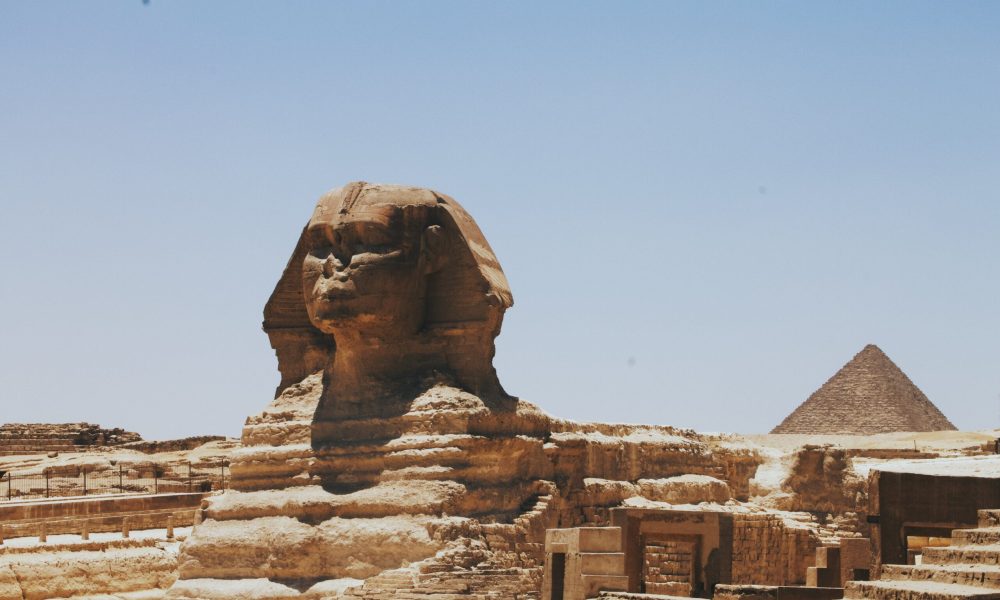

The Great Pyramid of Giza:
The Great Pyramid of Giza: Unveiling an Ancient Marvel
Introduction:
In the heart of the mystical Giza Plateau, the Great Pyramid stands as an enduring testament to the grandeur of ancient Egypt. A colossal monument that echoes through the corridors of time, this architectural marvel transcends the boundaries of history, captivating the imagination of all who gaze upon its awe-inspiring stature. Let's embark on a journey to unravel the mysteries and magnificence of the Great Pyramid of Giza.
Key Details:
Location:
Nestled on the Giza Plateau, just outside Cairo, Egypt, the Great Pyramid commands a prominent presence on the landscape, with the Sphinx as its silent companion.
Builder:
Commissioned by the visionary Pharaoh Khufu, also known as Cheops, the Great Pyramid's construction was a monumental undertaking that reflected the pharaoh's desire for an eternal legacy.
Construction Period:
The colossal structure emerged from the hands of skilled laborers and architects during the period around 2580–2560 BCE, marking the pinnacle of the Old Kingdom's architectural achievements.
As we delve into the intricate details of its construction, alignment, and symbolism, the Great Pyramid unfolds as a mystical gateway to the past, inviting us to decipher the language of its stones and explore the profound legacy left by Pharaoh Khufu. Join me on this archaeological voyage as we unravel the layers of history encapsulated within the timeless embrace of the Great Pyramid of Giza.
Architectural Features of the Great Pyramid:
1. Massive Size:
The Great Pyramid of Giza stands as a colossal behemoth, a testament to the engineering prowess of ancient Egypt. Its original height, towering at 146.6 meters (481 feet), held the record as the tallest man-made structure for over 3,800 years. The sheer scale of the pyramid is awe-inspiring, comprising an estimated 2.3 million limestone and granite blocks, each meticulously carved and precisely fitted to create the monumental structure that continues to defy time.
2. Precise Alignment:
One of the most astonishing features of the Great Pyramid is its meticulous alignment with the cardinal points of the compass—north, south, east, and west. The pyramid's sides align almost perfectly with the four cardinal directions, showcasing an extraordinary level of astronomical and geometrical precision. This deliberate alignment has sparked theories about the pyramid's cosmic significance, serving as both a mortuary structure and an astronomical observatory.
3. Construction Techniques:
The construction techniques employed in building the Great Pyramid remain a subject of intrigue and debate. Skilled laborers and craftsmen leveraged a combination of manual and mechanical methods. The stones, quarried from nearby sites, were transported and hoisted into position with remarkable precision. Theories suggest the use of sledges, levers, and counterweights in the construction process, showcasing a sophisticated understanding of engineering principles.
4. Casing Stones and Smooth Surface:
Originally, the Great Pyramid was encased in smooth, polished Tura limestone casing stones, creating a dazzling reflective surface that gleamed in the sunlight. While many casing stones have eroded or were removed over time, remnants offer glimpses of the pyramid's original splendor. The smooth casing stones were precisely cut and aligned, contributing to the pyramid's extraordinary aesthetic appeal.
5. Interior Passageways and Chambers:
The interior of the Great Pyramid is a labyrinthine marvel with a series of passageways, corridors, and chambers. The Grand Gallery, the King's Chamber, and the Queen's Chamber showcase meticulous craftsmanship. The King's Chamber, housing a red granite sarcophagus, has drawn attention for its apparent simplicity and the symbolic significance attributed to its design.
The architectural features of the Great Pyramid stand as a testament to the ancient Egyptians' advanced knowledge of mathematics, astronomy, and engineering. As we unravel the intricacies of its construction, we glimpse into a world where colossal structures were erected not only as tributes to earthly power but as eternal monuments to the cosmic order. Join me as we continue our exploration into the heart of this ancient wonder, uncovering the secrets concealed within the stones of the Great Pyramid of Giza.
Significance of the Great Pyramid: Bridging Ancient Wisdom and Modern Wonder
1. Cosmic Symbolism in Ancient Egypt:
The Great Pyramid of Giza stands not only as a monumental tomb but as a cosmic symbol deeply rooted in ancient Egyptian spirituality. Aligned with precision to the cardinal points, its architecture reflects a harmonious connection with the celestial realm. The pyramid's shape itself symbolizes the sun's rays descending to Earth, emphasizing the pharaoh's divine journey into the afterlife.
2. Cultural Legacy and Royal Immortality:
In the cultural tapestry of ancient Egypt, the Great Pyramid represented more than a mortuary structure—it embodied the eternal quest for immortality. Pharaoh Khufu's vision transcended earthly realms, seeking to ensure his divine legacy endured beyond mortality. The pyramid's grandeur conveyed not only the pharaoh's earthly might but his spiritual journey towards the cosmic gods.
3. Architectural Marvel and Technological Legacy:
The architectural marvels of the Great Pyramid showcased the advanced knowledge and ingenuity of ancient Egyptian builders. Its precise alignment, massive size, and construction techniques continue to perplex modern scholars. The pyramid's enduring legacy extends beyond symbolism; it remains a testament to the remarkable technological achievements of a civilization that harnessed the power of mathematics and engineering.
4. Mystique and Modern Wonder:
In modern times, the Great Pyramid retains an air of mystique, captivating the imagination of travelers, scholars, and enthusiasts alike. Its iconic silhouette against the Egyptian skyline draws millions of visitors annually. The pyramid's enigmatic aura has spawned numerous theories and speculations, from extraterrestrial connections to hidden chambers yet to be discovered.
5. Archaeoastronomy and Timeless Questions:
The Great Pyramid's alignment with celestial bodies has fueled the field of archaeoastronomy, where researchers explore ancient structures' connections to astronomical phenomena. The enduring mysteries surrounding the pyramid spark ongoing research, keeping its cultural and scientific significance vibrant in contemporary discourse.
6. Inspiration for Modern Architecture:
The Great Pyramid's influence extends to modern architecture, inspiring structures that echo its grandeur. Architects and designers worldwide draw upon its timeless design principles, acknowledging the enduring allure of a structure that has stood for over four millennia.
In exploring the cultural and symbolic significance of the Great Pyramid, we find a bridge between ancient wisdom and modern fascination. As we peer into the past, the pyramid's stones whisper tales of a civilization that sought to transcend the boundaries of mortality, leaving an indelible mark on the landscape of human history. Join me in our next chapter as we unravel the mystique of the Pyramid of Khafre, discovering the interconnected stories woven within the sands of Giza."
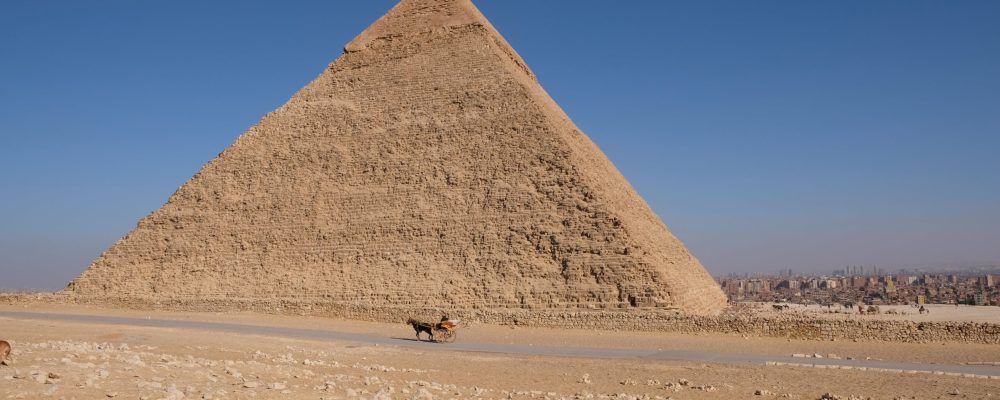

Pyramid of Khafre:
Pyramid of Khafre: Majestic Guardian of Giza's Legacy
As we traverse the ancient sands of Giza, another regal presence emerges—the Pyramid of Khafre. Standing in the shadow of its colossal neighbor, the Great Pyramid, Khafre's monument embodies a majestic allure that resonates through millennia. Join me on this expedition as we unravel the tales of the Pyramid of Khafre, its harmonious relationship with the Giza Plateau, and the pharaoh for whom it stands sentinel—Pharaoh Khafre.
Key Details:
Location:
Nestled on the Giza Plateau, the Pyramid of Khafre commands attention with its strategic placement. It stands just to the southeast of the Great Pyramid, forming an integral part of the iconic Giza trio.
Proximity to the Great Pyramid:
The Pyramid of Khafre, though slightly shorter than the Great Pyramid, holds a unique position in the Giza complex. Its proximity to its grandiose neighbor creates a visual harmony, with the two structures seemingly engaged in a timeless dialogue. This spatial arrangement, intentional and awe-inspiring, adds a layer of significance to the overall architectural ensemble.
Pharaoh Khafre:
Commissioned by Pharaoh Khafre, the fourth ruler of the Fourth Dynasty of ancient Egypt, this pyramid serves as a testament to the pharaoh's enduring legacy. Khafre, known in Greek as Chephren, ascended to the throne after his father, Pharaoh Khufu, and embarked on a reign marked by monumental architectural achievements.
As we venture deeper into the mysteries of the Pyramid of Khafre, we'll explore its unique features, the Sphinx that stands guard at its entrance, and the cultural significance embedded in its stones. Join me on this archaeological journey as we unravel the stories etched within the walls of Khafre's timeless monument."
Architectural Features of the Pyramid of Khafre:
1. Majestic Height:
The Pyramid of Khafre, while slightly shorter than the Great Pyramid, stands as a formidable monument, reaching a height of 136.4 meters (447 feet). Its majestic presence on the Giza Plateau contributes to the iconic skyline that has captured the imaginations of travelers and scholars throughout the ages.
2. Sphinx and Pyramid Symbiosis:
Adjacent to the Pyramid of Khafre, the enigmatic Sphinx assumes a guardian role, gazing stoically towards the horizon. The proximity of the Sphinx and Khafre's pyramid creates a captivating narrative, enhancing the overall symbolism of the Giza complex. The Sphinx, with the body of a lion and the head of a pharaoh, complements the pyramid's regality, possibly representing the pharaoh as the earthly incarnation of the sun god Ra.
3. Remaining Casing Stones:
While the Pyramid of Khafre, like its counterparts, was once adorned with casing stones, it retains some of these polished Tura limestone blocks at its pinnacle. These casing stones, though weathered by time, offer glimpses into the pyramid's original splendor. The casing stones, with their smooth surfaces, reflected the sunlight, creating a dazzling effect that added to the mystique of the pyramid.
4. Valley Temple and Causeway:
The Pyramid of Khafre is associated with a well-preserved Valley Temple and a causeway that leads to the Mortuary Temple near the Sphinx. These structures, constructed with precision, served integral roles in the funerary rituals and processes associated with the pharaoh's journey to the afterlife. The Valley Temple, in particular, provides insights into the architectural sophistication of the ancient Egyptians.
5. Inner Chambers and Passageways:
Similar to the Great Pyramid, Khafre's monument houses inner chambers and passageways. The subterranean chamber, the Queen's Chamber, and the King's Chamber are elements that contribute to the pyramid's architectural complexity. The structure's internal layout reflects the religious and spiritual beliefs of ancient Egyptians regarding the afterlife.
The Pyramid of Khafre, with its distinctive features and harmonious relationship with the Sphinx, invites us to delve into the multifaceted layers of ancient Egyptian culture and architecture. Join me in the next chapter as we unravel the mysteries surrounding the Pyramid of Menkaure, completing the trilogy that graces the Giza Plateau."
Significance of the Pyramid of Khafre: Legacy in Stone and Sphinx
1. Royal Legacy of Pharaoh Khafre:
The Pyramid of Khafre stands as a testament to the enduring legacy of Pharaoh Khafre, the ruler who envisioned this grand architectural marvel. Khafre, the son of Khufu, inherited a kingdom marked by monumental achievements, and his reign further solidified the Fourth Dynasty's prominence in ancient Egypt. The pyramid was not only a mortuary structure but a tangible expression of Khafre's divine lineage and a testament to his commitment to immortalizing his reign.
2. Symbolic Relationship with the Sphinx:
The Pyramid of Khafre's significance extends beyond its individual stature, intertwining with the nearby Sphinx in a symbolic dance of regality and mystery. The Sphinx, with its enigmatic countenance, guards the approach to Khafre's pyramid. This proximity creates a narrative of pharaonic power and divine connection, possibly representing the pharaoh as the earthly manifestation of the sun god Ra. The interplay between the pyramid and the Sphinx adds a layer of symbolism to the overall Giza complex.
3. Alignment and Cosmic Harmony:
Similar to the Great Pyramid, Khafre's pyramid is aligned with precision to the cardinal points, reflecting the ancient Egyptians' deep connection with cosmic forces. The alignment of these structures not only served religious and ritualistic purposes but also showcased a sophisticated understanding of astronomy and geometry. Khafre's pyramid, standing in harmony with its celestial surroundings, reflects the Egyptian belief in the eternal cosmic order.
4. Role in the Giza Complex:
Within the Giza Plateau's architectural ensemble, the Pyramid of Khafre plays a pivotal role in complementing the Great Pyramid and the Pyramid of Menkaure. The spatial arrangement of these structures creates a visual harmony that transcends individual monuments, forming a sacred landscape dedicated to the afterlife and the cosmic journey of the pharaohs. The Valley Temple, causeway, and Mortuary Temple associated with Khafre's pyramid contribute to the holistic funerary complex, reflecting the intricate planning and significance attributed to each element.
5. Reflection of Funerary Beliefs:
The internal chambers and passageways of Khafre's pyramid, like those of its counterparts, were designed to align with the religious beliefs surrounding the pharaoh's journey to the afterlife. The carefully constructed chambers, subterranean spaces, and the symbolic significance of the pyramid's form all contribute to a narrative of spiritual transition and rebirth.
In exploring the significance of the Pyramid of Khafre, we uncover a story woven into the fabric of ancient Egyptian culture—a story of divine rulership, cosmic alignment, and the eternal quest for an afterlife steeped in cosmic harmony. Join me as we conclude our journey through the Giza Plateau with the exploration of the Pyramid of Menkaure, the final piece in this ancient trilogy."
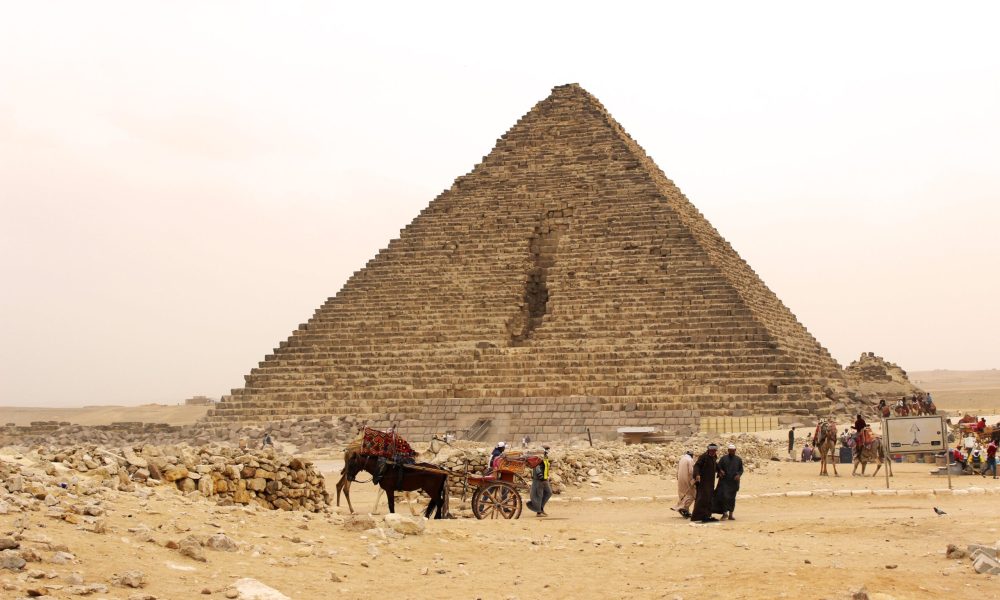

Pyramid of Menkaure:
Pyramid of Menkaure: A Crown Jewel in Miniature
Introduction:
In the timeless embrace of the Giza Plateau, the Pyramid of Menkaure stands as the smallest yet no less significant jewel in the crown of ancient Egyptian architecture. Join me on this final leg of our journey through the pyramids, where we explore the mysteries of the Pyramid of Menkaure, its intimate connection with the Giza complex, and the pharaoh for whom it was erected—Pharaoh Menkaure.
Key Details:
Size and Position:
Nestled at the southwestern corner of the Giza Plateau, the Pyramid of Menkaure commands attention despite its smaller stature. Though not as colossal as its neighbors, the intricacies of Menkaure's pyramid reveal a profound story of ambition, craftsmanship, and the enduring quest for an immortal legacy.
Pharaoh Menkaure:
Commissioned by Pharaoh Menkaure, the fifth ruler of the Fourth Dynasty, this pyramid is a testament to a reign that sought to leave an indelible mark on the landscape of ancient Egypt. Menkaure, continuing the legacy of pyramid construction established by his predecessors, embarked on a path that would etch his name into the annals of history.
As we delve into the nuances of Menkaure's pyramid, exploring its architectural features, cultural significance, and its place within the Giza complex, we uncover a tale that resonates through the ages—a tale of ambition, spirituality, and the eternal pursuit of an afterlife beyond mortal realms. Join me as we unravel the mysteries concealed within the stones of the Pyramid of Menkaure, completing our journey through the iconic trio of Giza's ancient wonders.
Architectural Features of the Pyramid of Menkaure and Its Complex:
1. Pyramid of Menkaure:
Size and Dimensions:
The Pyramid of Menkaure, while the smallest among the Giza trio, still boasts impressive dimensions. It stands at approximately 65 meters (213 feet) in height, with a base length of about 108 meters (354 feet). Its smaller scale, however, does not diminish the intricacy and significance of its construction.
Construction Materials:
Like its larger counterparts, Menkaure's pyramid was constructed using limestone blocks quarried from nearby sources. The precision in quarrying, transporting, and placing these stones reflects the advanced engineering capabilities of ancient Egyptian builders.
2. Mortuary and Valley Temples:
Valley Temple:
The Mortuary Complex of Menkaure includes a well-preserved Valley Temple, a structure linked to the pyramid through a causeway. The Valley Temple served as a crucial element in the pharaoh's mortuary rituals and was dedicated to the funerary cult.
Causeway:
The causeway connecting the Valley Temple to the Pyramid of Menkaure provided a ceremonial pathway for the pharaoh's journey to the afterlife. Its construction and alignment were integral to the religious and symbolic aspects of ancient Egyptian funerary practices.
3. Satellite Pyramids for Queens:
Smaller Pyramids:
Menkaure's pyramid complex includes three smaller pyramids positioned along its eastern side. These smaller pyramids were dedicated to queens, serving as burial places for female members of the royal family. Although smaller in scale, they exhibit the same architectural precision as the main pyramid.
Significance of the Queens' Pyramids:
The inclusion of smaller pyramids for queens emphasizes the familial and divine connections within the royal lineage. These structures, aligned with the main pyramid, contribute to the holistic nature of the complex and underscore the importance of women in the pharaoh's legacy.
4. Inner Chambers and Passageways:
King's Chamber:
Menkaure's pyramid, like its predecessors, contains inner chambers, including a centrally located burial chamber. The layout and construction of the inner chambers reflect the religious beliefs and rituals associated with the pharaoh's journey to the afterlife.
Coffer and Sarcophagus:
Within the King's Chamber, a granite coffer—similar to those found in other pyramids—served as the receptacle for the pharaoh's mummified remains. The burial rituals and the placement of ritualistic items within the burial chamber were integral to the spiritual transition of the deceased.
The architectural features of the Pyramid of Menkaure and its complex showcase the meticulous planning and cultural significance embedded in ancient Egyptian pyramid construction. Join me as we conclude our exploration of the Giza Plateau, reflecting on the enduring legacy of these architectural wonders and the cultural tapestry they weave through time.
Significance of the Pyramid of Menkaure: A Harmonious Coda in Giza's Symphony
1. Culmination of Giza's Architectural Ensemble:
The Pyramid of Menkaure, while smaller in stature compared to its colossal neighbors, holds profound significance within the broader context of the Giza Plateau. As the final chapter in the trilogy of Giza's pyramids, Menkaure's monument serves as a harmonious coda, completing an architectural ensemble that epitomizes the pinnacle of ancient Egyptian engineering and spirituality.
2. Architectural Harmony and Spatial Arrangement:
The placement of Menkaure's pyramid within the Giza complex contributes to a spatial harmony that transcends individual structures. Its strategic alignment with the Pyramids of Khafre and Khufu creates a visual synergy, symbolizing the unity of the pharaohs in life and their journey to the afterlife. The smaller scale of Menkaure's pyramid, nestled within the grandeur of its counterparts, accentuates the holistic nature of Giza's architectural design.
3. Inclusion of Queens' Pyramids:
The presence of smaller pyramids for queens in Menkaure's complex adds a nuanced layer to its significance. These structures, dedicated to female members of the royal family, emphasize the interconnectedness of the pharaoh's lineage and underscore the importance of women in the royal funerary traditions. The inclusion of queens' pyramids showcases a holistic approach to the afterlife, acknowledging the familial and divine bonds that endure beyond mortality.
4. Culmination of Pharaonic Legacy:
Menkaure's pyramid represents the culmination of a pharaonic legacy that spans generations. As the son of Khufu and the successor to Khafre, Menkaure's reign and the construction of his pyramid mark a continuation and refinement of architectural traditions established by his predecessors. The pyramid's significance lies not only in its individual stature but in its role as the final chapter of a cultural and spiritual odyssey etched into the sands of Giza.
5. Spiritual Transition and Afterlife Beliefs:
The inner chambers and passageways of Menkaure's pyramid, like those of Khufu and Khafre, were designed with meticulous attention to religious beliefs surrounding the pharaoh's journey to the afterlife. The architectural features, including the King's Chamber and the coffer, reflect the profound spiritual transition envisioned by ancient Egyptians, where death was not an end but a gateway to a celestial existence.
In exploring the significance of the Pyramid of Menkaure, we encounter a narrative that extends beyond the stones and structures. It is a story of cultural continuity, familial bonds, and the enduring quest for immortality. As we conclude our journey through the Giza Plateau, we stand in awe of the architectural marvels that have transcended millennia, inviting us to ponder the mysteries of life, death, and the cosmic order.
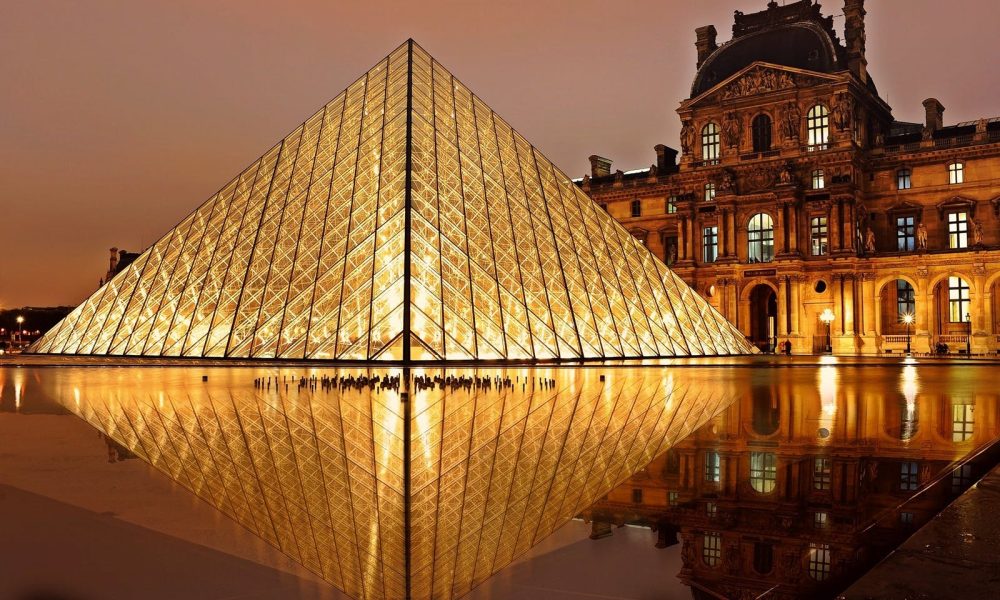

Purpose and Symbolism:
Purpose and Symbolism of the Pyramids: Tombs of Eternity
1. Monumental Tombs for Pharaohs:
The primary purpose of the pyramids, including those at Giza, was to serve as monumental tombs for the pharaohs of ancient Egypt. These colossal structures were erected to house the remains of the divine rulers, specifically the pharaohs, who were believed to be earthly manifestations of gods. The pyramids were conceived not only as repositories for mortal remains but as gateways to the afterlife, ensuring the pharaoh's eternal journey among the cosmic forces.
2. Symbolism of Immortality and Cosmic Alignment:
The construction and design of the pyramids were infused with rich symbolism reflecting the ancient Egyptians' beliefs in immortality and the cosmic order. The pyramid shape itself represented the sun's rays descending to earth, symbolizing the pharaoh's connection with divine energies. The meticulous alignment of the pyramids with the cardinal points and celestial bodies emphasized the Egyptians' understanding of cosmic cycles and their desire to secure a harmonious transition to the afterlife.
3. Religious Beliefs Encoded in Architecture:
The pyramids served as architectural canvases for expressing intricate religious beliefs. The Pyramid Texts, inscribed on the inner walls of the pyramids, were sacred spells and rituals designed to guide the pharaohs through the perilous journey of the afterlife. These texts outlined the importance of proper burial rites, the preservation of the body, and the necessity of religious rituals for a successful transition to the cosmic realm.
4. Connection with Deities and Cosmic Forces:
The construction of the pyramids reflected the ancient Egyptians' deep connection with their pantheon of deities and cosmic forces. Pharaohs were considered divine beings with a sacred duty to maintain cosmic harmony. The grandeur of the pyramids, aligned with celestial bodies and constructed on a monumental scale, conveyed the pharaohs' desire to align their earthly power with the eternal forces governing the universe.
5. Funerary Practices and Rituals:
The entire pyramid complex, including the Valley Temple, causeway, and mortuary temples, played crucial roles in the funerary practices and rituals associated with the pharaoh's passage to the afterlife. These structures were not only practical components of the burial process but also sacred spaces where rituals and ceremonies were conducted to honor the deceased and ensure a favorable journey beyond.
6. Integration of Queens' Pyramids:
The inclusion of smaller pyramids for queens within the complex further emphasized the cultural and familial aspects of the afterlife. These structures acknowledged the important role of queens in the pharaoh's lineage and their participation in the cosmic journey. The symbolism embedded in the queens' pyramids highlighted the interconnectedness of family, royalty, and the divine in the ancient Egyptian worldview.
In summary, the pyramids of ancient Egypt were not just architectural marvels but profound expressions of religious and cultural beliefs. As monumental tombs, they symbolized the pharaohs' quest for immortality and their cosmic connection with the divine. The intricate rituals, inscriptions, and architectural features were all elements of a complex tapestry that wove together the mortal and cosmic realms in the ancient Egyptian understanding of life, death, and the afterlife.
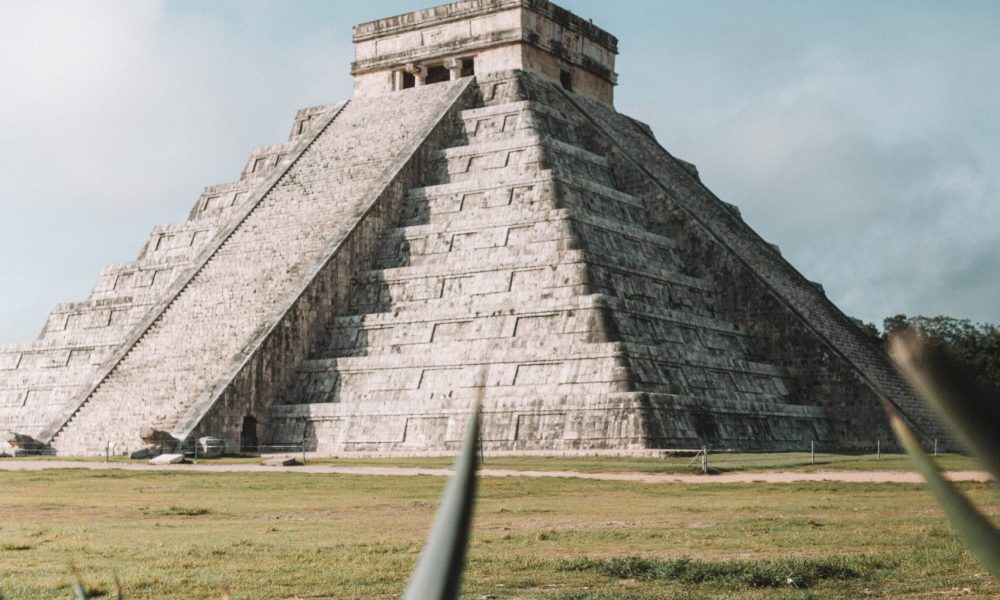

Architectural Achievements:
Architectural Achievements of the Pyramids: Marvels of Ancient Engineering
1. Precision in Alignment:
Cardinal Points Alignment:
The pyramids of Giza showcase an extraordinary level of precision in alignment with the cardinal points—north, south, east, and west. The sides of the pyramids are aligned almost perfectly with these compass directions. This precise orientation is a testament to the advanced astronomical and geometric knowledge possessed by ancient Egyptian builders.
Celestial Alignment:
Beyond cardinal points, the pyramids also exhibit alignment with celestial bodies. The Giza pyramids are believed to have symbolic connections with the stars, particularly the constellation Orion. The arrangement of the pyramids reflects the layout of Orion's belt, suggesting a celestial blueprint guiding their construction.
2. Use of Construction Materials:
Quarrying and Transport:
The construction materials, predominantly limestone and granite, were quarried from nearby locations. The transportation of these massive stones to the construction site was a monumental task. Theories suggest the use of sledges and possibly lubrication techniques to ease the movement of stones over the terrain.
Meticulous Stone Cutting:
The precision in cutting and shaping stones is evident in the intricate fit of the pyramid blocks. The limestone casing stones, in particular, were meticulously cut and polished, creating smooth surfaces that reflected sunlight. The use of such refined materials added to the grandeur of the pyramids.
3. Construction Techniques:
Core and Casing Structure:
The pyramids were constructed in a core-and-casing structure. The core consisted of rough-hewn stones, while the casing stones, initially smooth and polished, adorned the exterior. The precision in fitting these stones ensured structural stability and aesthetic appeal.
Internal Passageways and Chambers:
The internal passageways and chambers within the pyramids exhibit sophisticated engineering. The narrow, ascending passageways leading to the King's Chamber, for example, required careful planning and construction to maintain structural integrity.
4. Technological Advancements:
Surveying and Leveling:
The ancient Egyptians demonstrated advanced surveying and leveling techniques. The flatness of the pyramid bases and the accuracy in aligning the pyramids with celestial and terrestrial features indicate a profound understanding of geometry and surveying.
Lifting and Hoisting:
The lifting and hoisting of massive stones to considerable heights remain a subject of debate among scholars. Various theories propose the use of ramps, counterweight systems, and ingenious methods for lifting stones to higher levels during construction.
5. Organizational Capabilities:
Labor Force:
The construction of the pyramids required a massive labor force. Skilled craftsmen, laborers, and architects collaborated efficiently to execute the vision of the pharaohs. The organization of such a workforce on a grand scale is a testament to the administrative and managerial capabilities of ancient Egyptian society.
Timeline of Construction:
The timeline for constructing the pyramids, particularly the speed at which they were built, is a remarkable aspect. Theories suggest that the construction of the Great Pyramid, for example, may have taken place over a span of around 20 years, showcasing the efficiency and dedication of the builders.
The architectural achievements of the pyramids at Giza stand as enduring marvels, testifying to the ingenuity and skill of ancient Egyptian builders. The precision in alignment, the mastery of stone cutting, and the technological advancements employed in their construction reflect a civilization that reached unparalleled heights in engineering and architecture. The pyramids remain a testament to the enduring legacy of ancient Egypt and its ability to translate grand visions into monumental reality.


Tourism and Conservation:
Tourism and Conservation of the Pyramids: Bridging Ancient Wonders and Modern Challenges
1. Modern Significance as Global Tourist Attractions:
Iconic Landmarks:
The pyramids of Giza stand as iconic landmarks that draw millions of tourists from around the world. Their sheer scale, historical significance, and enigmatic aura make them must-visit destinations for travelers, historians, and enthusiasts alike.
Cultural and Historical Appeal:
Tourists are captivated by the rich cultural and historical tapestry woven into the pyramids. The opportunity to witness these ancient wonders firsthand offers a profound connection to the mysteries of ancient Egypt, sparking a sense of awe and wonder.
Economic Impact:
The tourism industry around the pyramids contributes significantly to Egypt's economy. The influx of visitors supports local businesses, creates employment opportunities, and fosters economic growth in the surrounding areas.
2. Ongoing Conservation Efforts:
Structural Stability:
Preserving the structural stability of the pyramids is a paramount concern. Conservation efforts focus on maintaining the integrity of the stone blocks, addressing erosion, and mitigating the impact of environmental factors.
Casing Stones and Restoration:
Efforts are underway to restore and replace casing stones that have weathered or been removed over the centuries. The restoration work aims to recreate the visual impact of the original smooth surfaces that adorned the pyramids.
Preventive Measures:
Conservationists employ preventive measures to safeguard the pyramids. These measures include controlling visitor access, monitoring environmental conditions, and implementing policies to minimize potential damage from tourism-related activities.
3. Challenges in Preservation:
Tourist Impact:
The high volume of tourists poses challenges to preservation. Foot traffic, touching, and climber-induced erosion can contribute to wear and tear on the structures. Balancing accessibility with conservation efforts remains a delicate task.
Environmental Factors:
Environmental factors, such as pollution, air quality, and climate change, can impact the longevity of the pyramids. Conservationists grapple with finding sustainable solutions to mitigate these external threats.
Resource Limitations:
Adequate resources, including funding and skilled personnel, are essential for effective conservation. Resource limitations can hinder the implementation of comprehensive preservation strategies.
4. Collaborative Initiatives:
International Collaboration:
Conservation efforts benefit from international collaboration and expertise. Partnerships between Egyptian authorities, archaeological organizations, and international conservation bodies contribute to a holistic approach in safeguarding the pyramids.
Technological Innovation:
Advanced technologies, such as 3D scanning, laser mapping, and non-invasive monitoring systems, play a crucial role in conservation. These innovations provide valuable data for assessing the structural condition of the pyramids.
5. Educational and Awareness Programs:
Visitor Education:
Educational programs for visitors focus on raising awareness about the importance of responsible tourism and the role individuals can play in preserving these ancient wonders. Signs, guides, and interpretive materials contribute to informing the public about conservation efforts.
Community Involvement:
Engaging local communities in conservation efforts fosters a sense of ownership and responsibility. Empowering nearby residents to value and protect their cultural heritage contributes to the long-term sustainability of preservation initiatives.
In navigating the delicate balance between tourism and conservation, the pyramids of Giza continue to inspire and intrigue. As global symbols of human achievement, these ancient wonders beckon visitors to ponder the mysteries of the past while challenging present and future generations to protect and preserve these timeless monuments.
